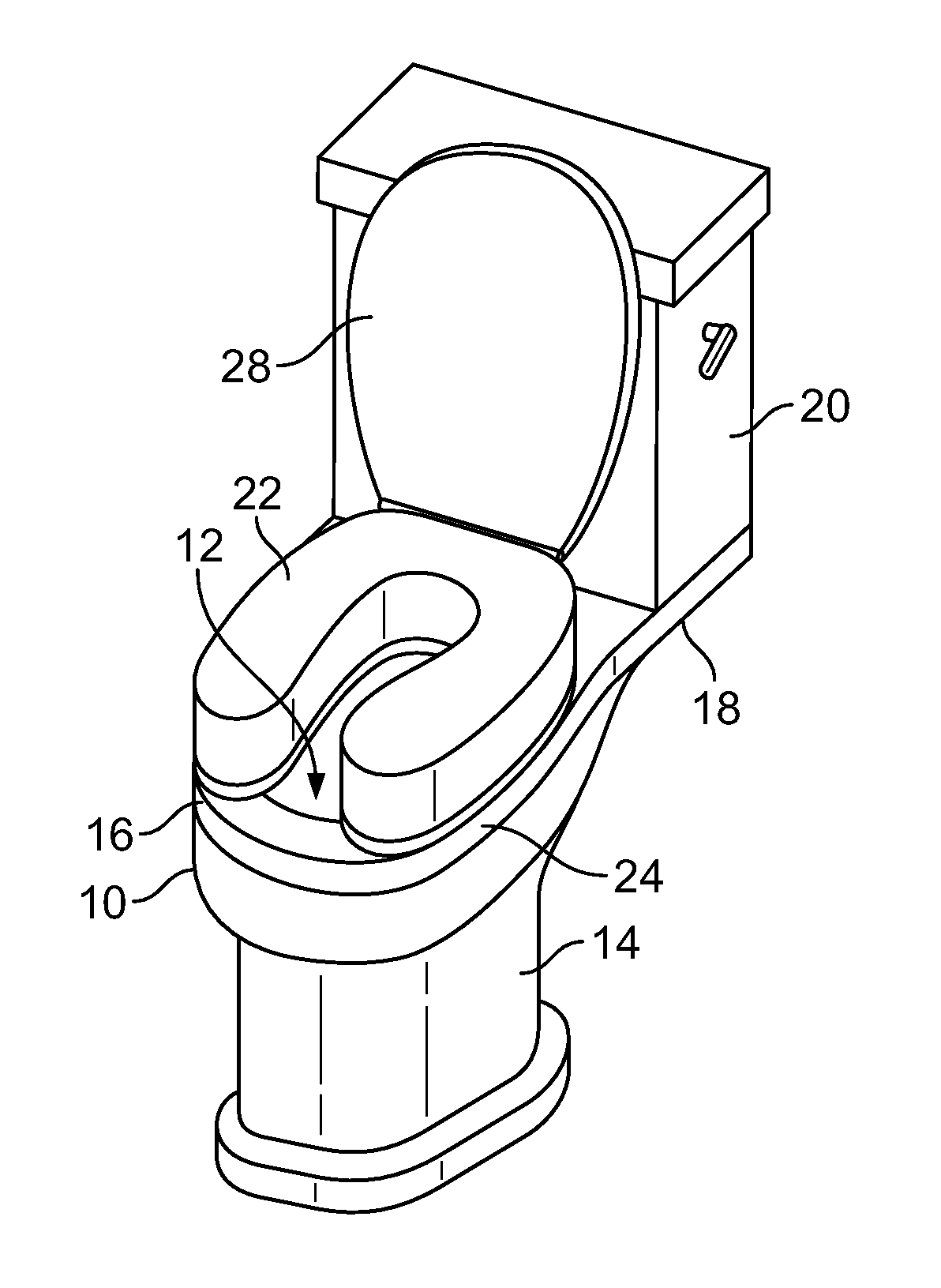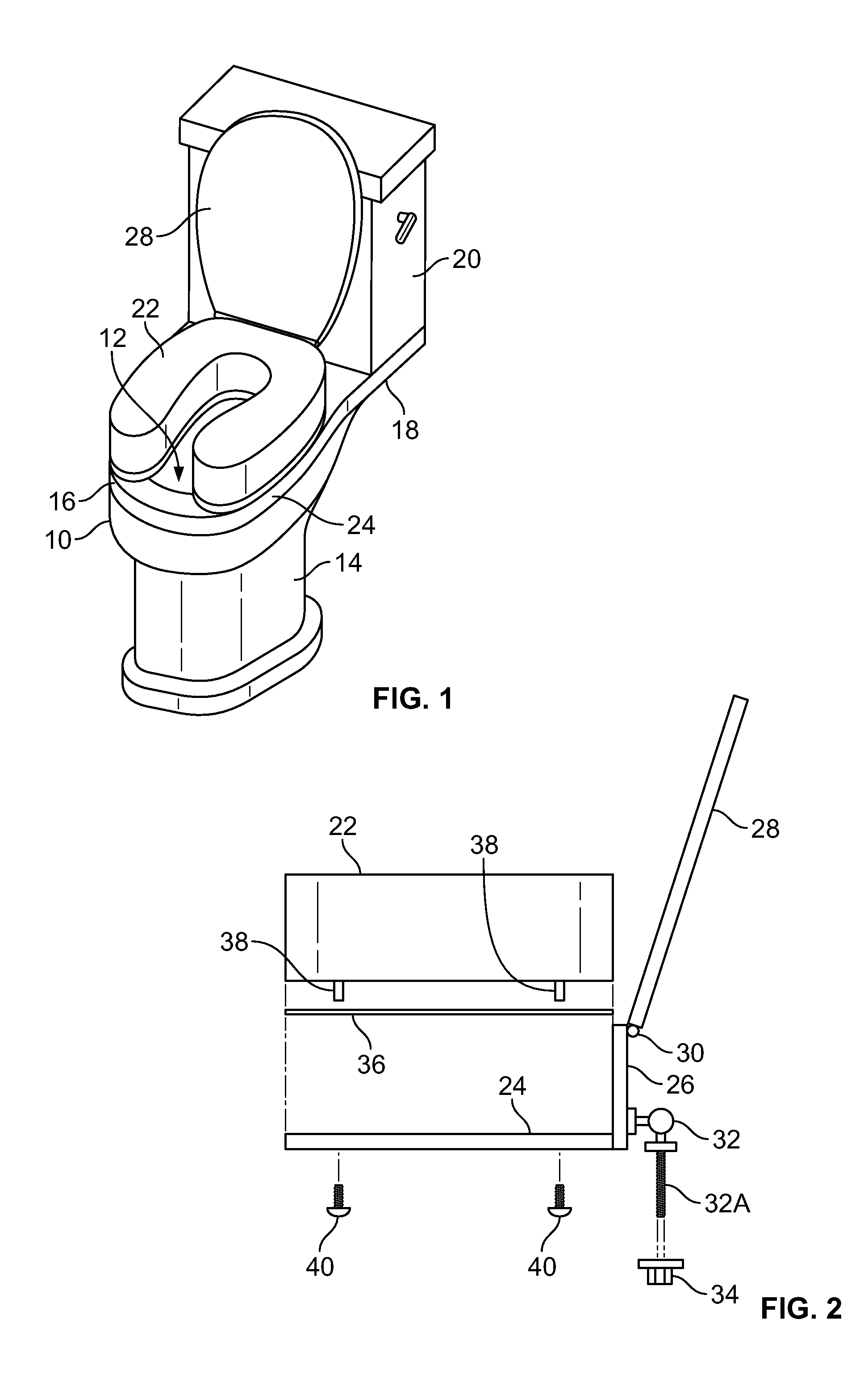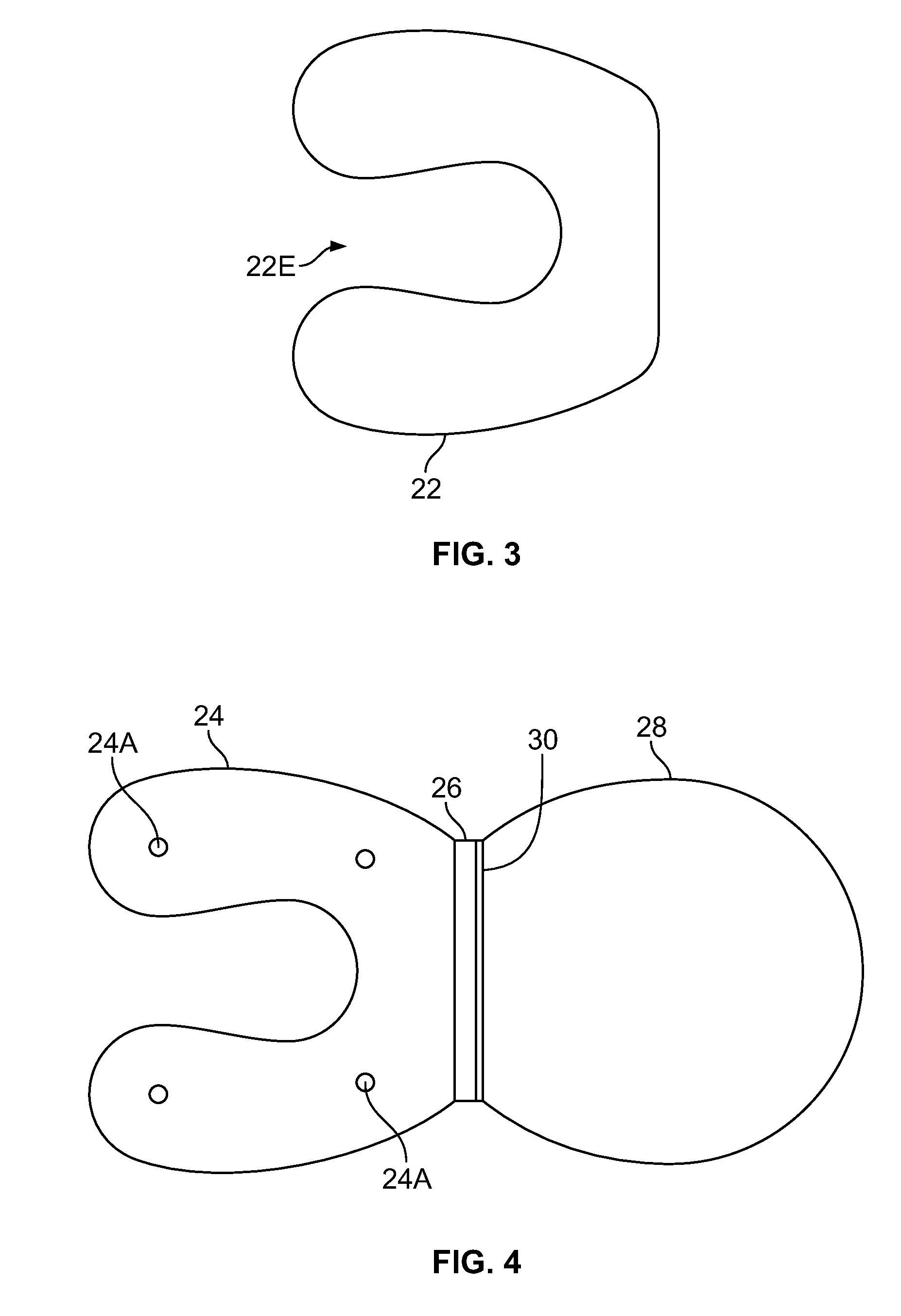Elevated seat assembly and method
- Summary
- Abstract
- Description
- Claims
- Application Information
AI Technical Summary
Benefits of technology
Problems solved by technology
Method used
Image
Examples
Embodiment Construction
[0032]Referring to FIGS. 1-5, toilet bowl 10 with an opening 12 is supported on a pedestal 14. Bowl 10 has a rim 16 that merges with a rear deck 18, shown supporting toilet tank 20. Bowl 10 has a pair of well-known bolt holes (not shown) in deck 18 in the space between bowl opening 12 and toilet tank 20.
[0033]An elevated seat assembly has a compressible, raised seat 22 that is mounted atop a stiff platform 24. Seat 22 has an enhanced thickness of 2.5 to 4 inches (6.3 to 10 cm), with the greatest thickness (10 cm) illustrated in FIGS. 1 and 2. It is advantageous to choose a thickness that brings the top of the seat 22 to an elevation of 17 inches (43 cm), in accordance with Federal ADA regulations, although other elevations may be desirable in certain circumstances.
[0034]Seat 22 has a conventional horseshoe-shaped plan with a gap 22A, but may be a closed annulus in some embodiments. In any event, the outline of seat 22 will be consistent with standard rim profiles, which typically co...
PUM
| Property | Measurement | Unit |
|---|---|---|
| Thickness | aaaaa | aaaaa |
| Elevation | aaaaa | aaaaa |
| Flexibility | aaaaa | aaaaa |
Abstract
Description
Claims
Application Information
 Login to View More
Login to View More - R&D
- Intellectual Property
- Life Sciences
- Materials
- Tech Scout
- Unparalleled Data Quality
- Higher Quality Content
- 60% Fewer Hallucinations
Browse by: Latest US Patents, China's latest patents, Technical Efficacy Thesaurus, Application Domain, Technology Topic, Popular Technical Reports.
© 2025 PatSnap. All rights reserved.Legal|Privacy policy|Modern Slavery Act Transparency Statement|Sitemap|About US| Contact US: help@patsnap.com



